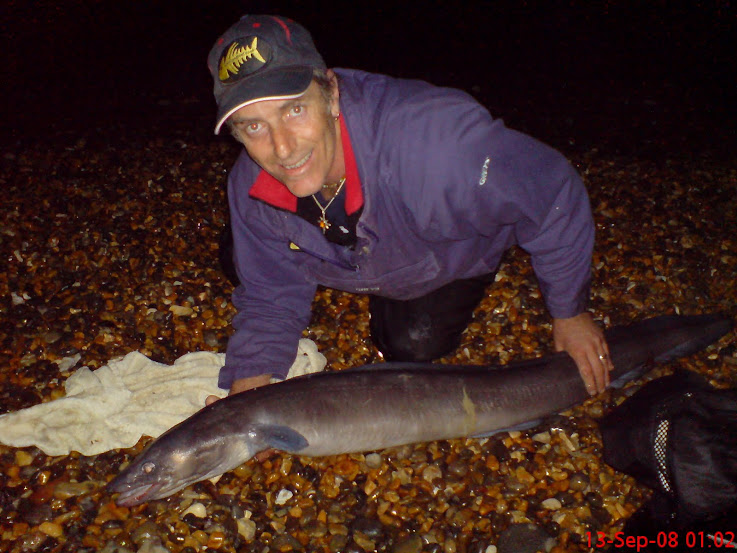Wrasse fishing
Interested in some great sports fishing? looking for regular catches then Wrasse fishing is for you. Done right, the humble Wrasse can provide you some top quality sport which will leave you wanting!!!
The Wrasse
There are a few species caught here in the UK waters. as follows:
- Ballen Wrasse – Heavy built fish with small mouth, with thick rubber lips and armed with teeth. Colouration varies with age and sex. Young fish are generally a shade of green, with older more mature fish a reddish brown / dark green, with lots of small white spots. Sometimes dark bars or lateral white banding may occur. Feeds on mollusc’s: crab, shrimp. Lives in rocky areas with heavy weed, loves gullies and over hangs to hide in.
- Cuckoo Wrasse – Similar shape to the Ballen Wrasse, but generally a bit finer (longer and thinner) with a longer more elongated mouth part, containing sharp teeth! Colour changes with age and sex. Females and immature males, are generally a yellowish brown to red, with 3 dark marks on the base of the rerar section of the dorsal fin. Fins edged in pale blue. Mature males are striking with bright blue heads and sides, and into the first of the dorsal fins. The blue edging of the other fins also tends to be greater, when compared with that of the female, or immature males. The colouration of the mature males head, tends to be replaced by white, during the mating session. The top and bottom rear thirds are a strong yellow colour. Habitat is similar to the Ballen Wrasse, but I have caught them more often higher up in deeper water (edge of deep drop offs etc). Feeds on the same foods as the Ballen Wrasse.
- Corkwing Wrasse – The most common species in the UK and the fish you are most likely to catch from the shore. Very similar to the Ballen Wrasse, with thick set body, head and neck and similar mouth part. The gill coverings on these guys have spines, be careful! Colouration is highly variable, although usually green to greenish brown, with darker pigmentation along the back and top sides, pale belly, with body scales highlighted by brownish dots or marks. A black smudge is to be found in front of the fin rays of the tail, below the lateral line. There is often a crescent shaped dark patch behind the eye. Males have blue to green, wavy lines on their head.
Fishing methods for Wrasse
You need to make a careful selection of the mark you are going to choose to fish for Wrasse from. Clean unbroken ground will not hold any wrasse, unless its on the edge of a reef or similar underwater feature. Rough broken ground, covered in weed and full of nooks and crannies is the best Wrasse fishing ground. Take a look at google maps to find hidden underwater reefs and fish holding areas. It might be worth snorkeling your ground, if you are fit and it is safe to do so. I have seen many 6lb plus Wrasse 5 feet from the shore in 6 feet of water….
With the above in mind, your tackle wants to be clear from the bottom, presenting your bait about a foot off the rocks. Float fishing tackle is the best choice in my opinion. You can test your rig at depths, until you find the bottom, then shorten the rig to present your bait just above the bottom. It will snag occasionally, but that’s hard fishing for you. The other advantage with a float set up is if allowed to drift in the wind or current you will cover a huge expanse of ground. Remember that the tide will effect the depth you are fishing!!!!
Bait can be most things, but rag and crab have produced the best results for me in Cornwall. Consider what Wrasse eat, how they are formed and you should draw the opinion that any mollusk would be a suitable choice for the Wrasse – try it! Keep your baits small as smaller wrasse will pick at the bait and never find the hook point.
Wrasse Rig
Your rig should be made of tough line. 20 – 30lb fluro Carbon is a good start with size 2 carp hook (they are strong and small!!). You need the heavy rig line to avoid loosing fish in the rocks. use a reasonable sized float, so it can been seen clearly at range. Many add a few red beads to the hook length as they feel this gives an added edge to the catch rate.
Wrasse bites are normally very rattly. Give them plenty of time to mouth the bait, but as soon as you think they are hooked, play them hard as they will dash for the safety of the rocks. Play them hard initially to get them high up in the water column, then get them to shore as quickly as possible, they will kick up a stink and make great sport. You need some forceps, in case they swallow the hook – those Wrasse have great TEETH!!!

No comments:
Post a Comment